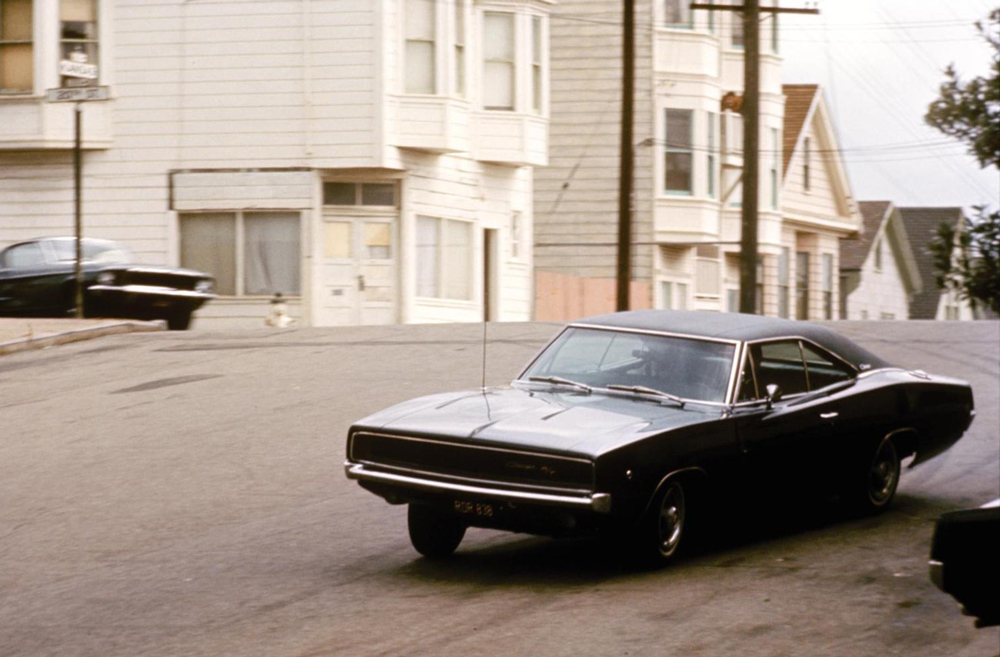
Bullitt ©1968, Package Design & Supplementary Material Compilation ©2008 Warner Bros.Entertainment Inc. Distributed by Warner Home Video. All Rights Reserved.
"Bullitt" A detective drama representing the 1960s that broke new ground for car chases.
2021.05.20
Filming techniques and locations that rewrote the history of car chases
So what was new about the car chase in Bullitt?
Of course, car chases have existed since the dawn of cinema. That said, they were usually just a giant camera set up outdoors to pan around the cars as they drove away. What worried filmmakers was how to film the driver. The cameras at the time were too big to be brought inside the car. So they came up with a method called the screen process. Actors were seated in a model of the car, and the view outside the car was shot separately and projected onto a screen to create a simulated driving scene. This way, there was no need to hire a stuntman every time, and the scene could be varied by changing the background footage. This filming method has many benefits from a production perspective, but it still gives the film a fake feel.
As technology continues to evolve, cameras become smaller and more compact. Peter Yates brings a lightweight Arriflex camera into the car to capture the bust shots of McQueen chasing the assassins being chased. This improves the realism by a lot. It gives a whole new look to the car chase.

Bullitt©1968, Package Design & Supplementary Material Compilation ©2008 Warner Bros.Entertainment Inc. Distributed by Warner Home Video. All Rights Reserved.
There was another purpose of the in-car camera. It was a subjective shot from McQueen's point of view while driving. The scene through the windshield was captured as it was in the video. The effect was amazing. The driver's point of view added to the film, making it more realistic and giving the audience a greater sense of excitement. Even though the film was made in 1968, the audience was able to enjoy the car chase with a VR-like sensation.
1. Exterior shot of a Ford Mustang and a Dodge Charger engaged in a car chase
2. Bust shot of McQueen driving with his assassins
3. POV shot of McQueen driving
The combination of these three shots in "Bullitt" established a new horizon for car chases. The outstanding editing sense of Frank P. Keller, who won the Academy Award for Best Editing, shines through.
The location of San Francisco was also a major factor. This city has many steep slopes and steep ups and downs, so just driving around in a car can give you the same thrill as riding a roller coaster. On flat roads, you can only complement "horizontal movement" in terms of visual expression, but by setting the film in San Francisco, you can add "vertical movement." In this film, the "hills" make a major contribution to the visual dynamism.
They also paid special attention to the sound. There is no soundtrack in the car chase scenes of this movie. The music was composed by the famous composer Lalo Schifrin, known for his work on Dirty Harry (1971) and Enter the Dragon (1973). He thought that the engine sounds would be the best soundtrack, and suggested not using soundtracks. Well, that's a brilliant idea.
McQueen wasn't satisfied with the car chase

